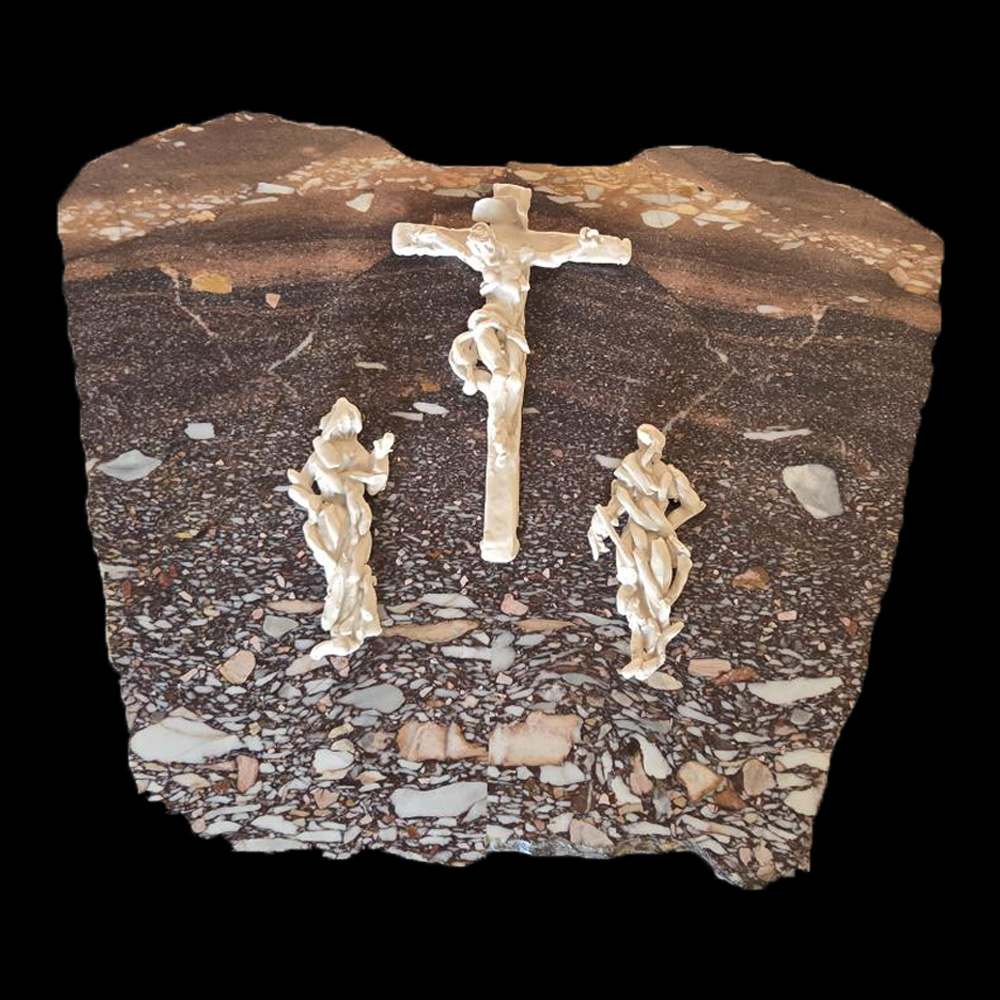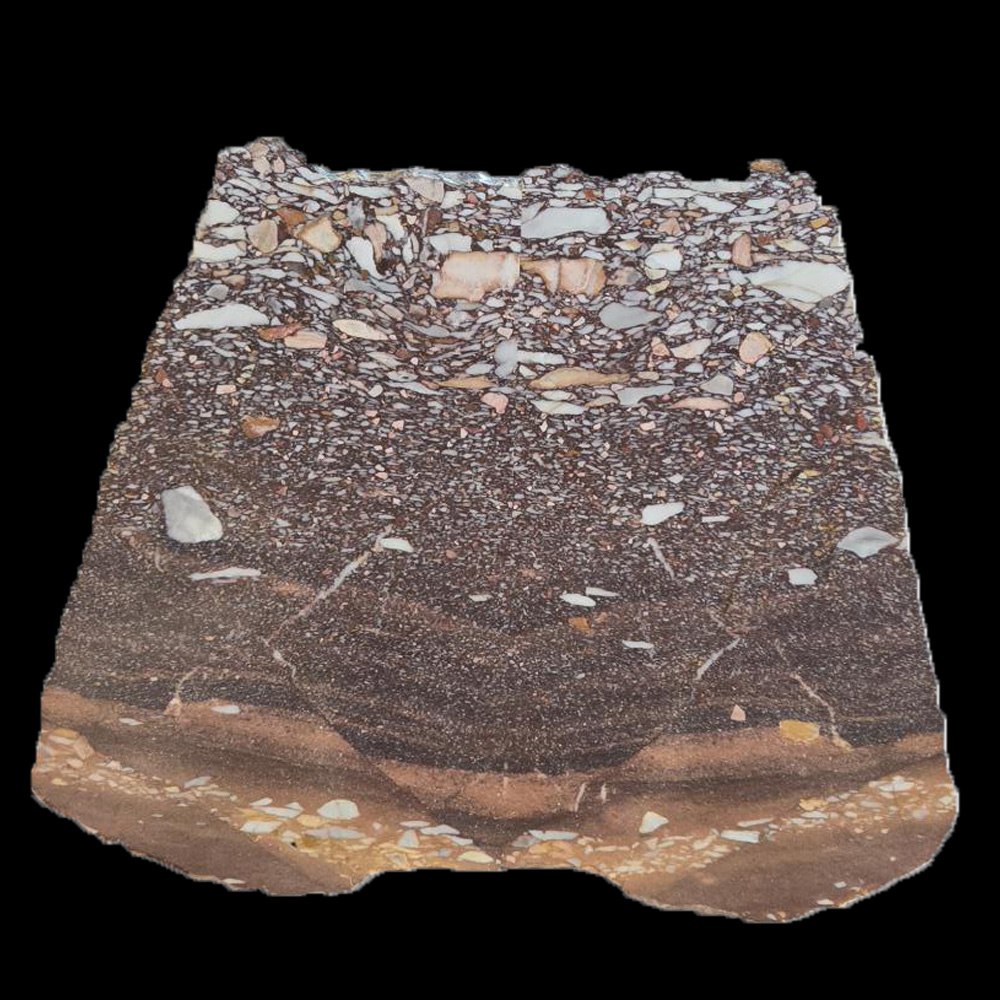Top covered in Semesanto breccia
→ Sculptures by Giuseppe Ducrot, Rome 2021
Floor covered in Semesanto breccia depicting the crucifixion of Christ on Golgotha or Calvary.
The breccia known as Semesanto by Roman stonemasons is a metamorphosed clastic sedimentary rock from the island of Skyrosin the Northern Sporades (north-western Aegean, Greece).
It is a variety of Settebasi breccia (marmor scyreticum), recognisable by its small, elongated and well-defined clasts and the presence of scattered chalk-coloured splinters. Of a friable consistency, it was extracted in blocks, unlike Settebasi, which is known to have been extracted in large blocks and columns.
The term Semesanto, known since the Renaissance, derives from the sugar-coated confetti known as “semesanto”.
Settebasi breccia and decorative rocks from the same island were quite successful on the market during the Roman Empire, as they did not cost much compared to other more expensive types such as porphyry or serpentine (see the rates in Diocletian's Edict) and offered a pleasant variety of colours.
Its use is well documented in Rome, in the Vesuvian centres (Pompeii, Herculaneum, Stabiae) and in Piazza Armerina in the Roman villa of Casale.


